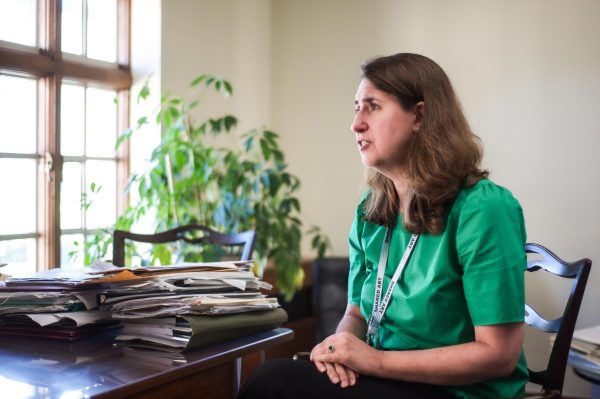An Obie Recommends: Finding a Place on Campus
I told myself this semester that I would make an effort to find truly relaxing outdoor spaces on campus. After a summer spent in a city with few opportunities to enjoy nature, a place full of greenery was at the top of my list of prospects. I wanted somewhere to attach memories to; in my first year I had made many lasting memories with friends but had fewer significant feelings attached to physical spaces.
In my experience, very few Obies have ventured into the territory of the Art Building. To most of Oberlin, the Allen Memorial Art Museum and the surrounding art-related spaces remain unvisited, meant only for the study of art. But this collection of buildings is worthy of study in their own right. The museum is a great place to analyze pieces or to collect yourself for a short time– in my opinion, the art library is the most comfortable study spot on campus; and the studios bring back memories of walking around easels, looking for inspiration within the works in progress.
I think a large part of why students rarely venture to this space voluntarily is because it is separate from the other academic buildings on campus. But the entire trek to and from this area, for me, provides an important space to breathe. Walking across Tappan Square, I can finally spend a couple minutes thinking of my goals and my development rather than my academic path or my daily routine.
A huge tree rests outside of the Venturi Art Building: a European weeping beech. The trunk twists and turns into thick branches that droop down in a surrounding circle, encompassing the nearby benched structure that holds the tree up. An easy-to-miss plaque rests in the middle of this canopy telling passersby that this tree, also called the Bacon Arbor, was a gift to the College. “[The tree] is still very young and will continue to grow for many decades,” the plaque reads. “People and the Weeping Beech can live in harmony for years to come, with the tree growing larger and the pleasure of seeing it becoming ever greater.”
It wasn’t until this semester that I truly noticed this thick canopy of leaves in this area. I’d walked under this tree so many times, completely missing the strong roots holding everything together, and the messages that students have carved into the tree over many years. I discovered it walking with my friends the weekend before classes started. We spent an entire afternoon sitting beneath the tree, taking pictures with the leafy background of the weeping branches.
The Art Building, a place near and dear to my heart, is a large part of my weekly routine of class, work, and play and the sight of this tree, previously passed over, is now an important part of my walk into the mode of art-related subjects. I appreciate the life that the Bacon Arbor brings to my walk. It is only a small part of Oberlin, but I hope that others have noticed this living being that has been here for years and can stop to think about their memories in natural spaces.







